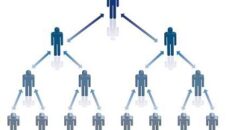By Hiran de Silva
In today’s digital ecosystem, social media is the marketplace of perception. What rises to the top is what the crowd votes for — not necessarily what’s best, but what’s most visible, most accessible, and most appealing to those with the shortest attention spans and the least skin in the game.
This presents a serious, often overlooked problem in how business tools evolve and how talent is discovered.
The Pyramid of Influence
At the base of the social media pyramid are the masses: millions of beginners, dabblers, or casual users. They are the ones who react, like, and share. Their volume gives them power — they determine what trends. And it’s these trends that shape the direction of product development and public discourse.
Big players like Microsoft, keenly aware of this, adjust their roadmap to please this large demographic. Features are developed not for their business utility, but for their surface appeal — simple, “wow-factor” tricks that capture likes and impressions. That’s how we end up with cosmetic features over substantive, scalable capabilities.
But here’s the thing: real business value isn’t decided by social media likes. It’s decided in boardrooms, budget reviews, and performance meetings — where outcomes matter, where decisions have consequences, and where competence, not clicks, is king.
Who Defines Value?
Not influencers. Not casual users. Not marketers.
The ones who define value are the people who run businesses — those with accountability to shareholders, boards, and customers. These leaders care about efficiency, clarity, accuracy, and agility — not flashy UI changes or five-click workflows to achieve what one click used to do.
And herein lies the mismatch. Social media cannot and will not serve the interests of serious business — because its incentive model is built for popularity, not performance.
So what can we do?
Flipping the Pyramid: A Thought Experiment
Let’s imagine a world where the majority — the base of the influence pyramid — were not casual users but business decision-makers. People with budgets, responsibility, and something to lose. What would they demand from their tools?
Not cosmetics. Not complexity disguised as innovation. They’d demand value: tools and techniques that reduce chaos, eliminate waste, and scale with their operations.
Now, back to reality.
We can’t change the structure of social media. But we can bypass it. We can flip the pyramid in individual decision-making, by engaging the people who matter with a thought experiment.
And that’s exactly what I did.
The 3 Groups: A Real-World Thought Experiment
We posed a typical Excel-based task — a common, industry-standard scenario — to 100 candidates. Not to complete, but to describe how they would approach it.
We found three distinct groups:
- Group 1: About half. They applied an intuitive, old-school approach: emailing files, linking sheets, copying and pasting data. Familiar, inefficient, and deeply entrenched.
- Group 2: About 49%. They had embraced “modern Excel” tools like Power Query, Dynamic Arrays, and Excel Tables — often without fully understanding the trade-offs. Their approach was more sophisticated on the surface but often inflexible and still fundamentally local, not enterprise-ready.
- Group 3: Just 1%. These individuals approached the problem in a way almost no one else did. Their solution was elegant, scalable, minimal in clicks, and not found anywhere on social media. It leveraged architecture, not features. It mirrored what large organizations truly want — agility at scale.
When employers were shown these three approaches, the results were unanimous. They instantly chose the Group 3 solution — despite its obscurity. Why? Because it solved the problem, fit enterprise constraints, and eliminated noise.
They didn’t care that it wasn’t trending on YouTube.
What they did care about was:
- “How can we find people who think like this?”
- “What search terms can we use to find this skill?”
- “Can we retain staff who show this level of thinking and make them internal champions?”
Unfortunately, the answer isn’t simple.
The Hiring Dilemma
You can’t advertise for skills that don’t exist on LinkedIn job descriptions.
You can’t tell recruiters: “Please find me people who know things that aren’t on the internet.”
Most recruiters wouldn’t even know what to look for — they’ve been trained to match keywords, not capabilities.
This is where the real disconnect lies. The talent that can transform your business is invisible to the systems designed to find it. They aren’t broadcasting their skills in social media-friendly formats. They don’t rank on trending hashtags.
They’re working in the background, quietly delivering measurable business value. And unless you see their results, you’ll never know they exist.
So How Do You Find Them?
One word: demonstration.
The only way to cut through the noise — both from the Excel influencers and the FP&A tool vendors who claim Excel can’t do X or Y — is to demonstrate.
Show the messy, slow, unreliable practices that most users apply.
Then show the clean, simple, scalable solution that only a handful of people can produce.
At that point, the employer — the person who actually makes the business decision — will ask, “Where do I find people like this?”
And I’ll say: I know a few. Would you like me to send some your way?
The Bigger Picture: Why This Matters Now
If we leave the future of Excel and enterprise productivity to social media, we will be stuck with toys and training wheels — while businesses hemorrhage money solving problems that were already solved decades ago.
But if just a few business leaders recognize this alternative reality, they can break away from the herd.
They can build teams who think like architects, not tinkerers. They can champion an approach that delivers clarity, speed, and control — not chaos with lipstick on it.
This isn’t about tools. It’s about thinking. And the people who possess that kind of thinking are already out there — just not where you’ve been told to look.
Would you like to meet them?






Add comment